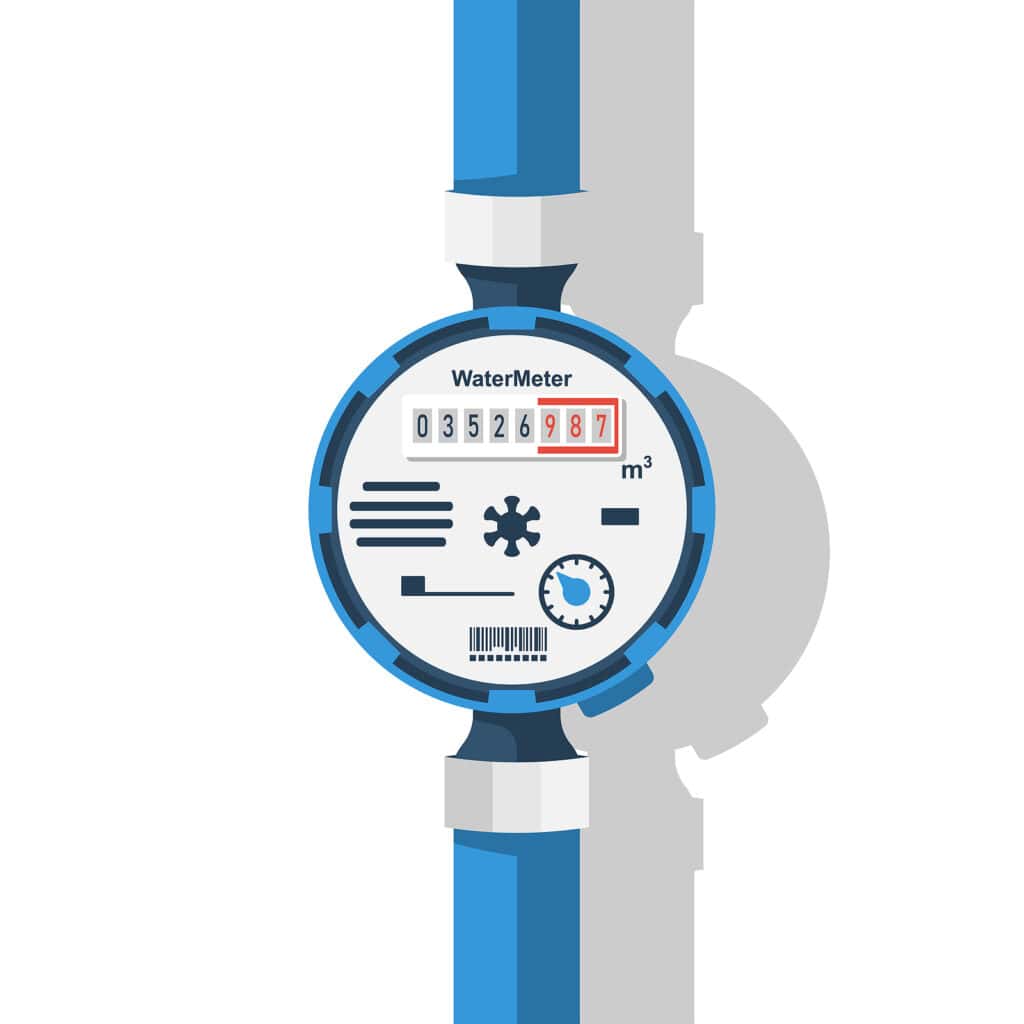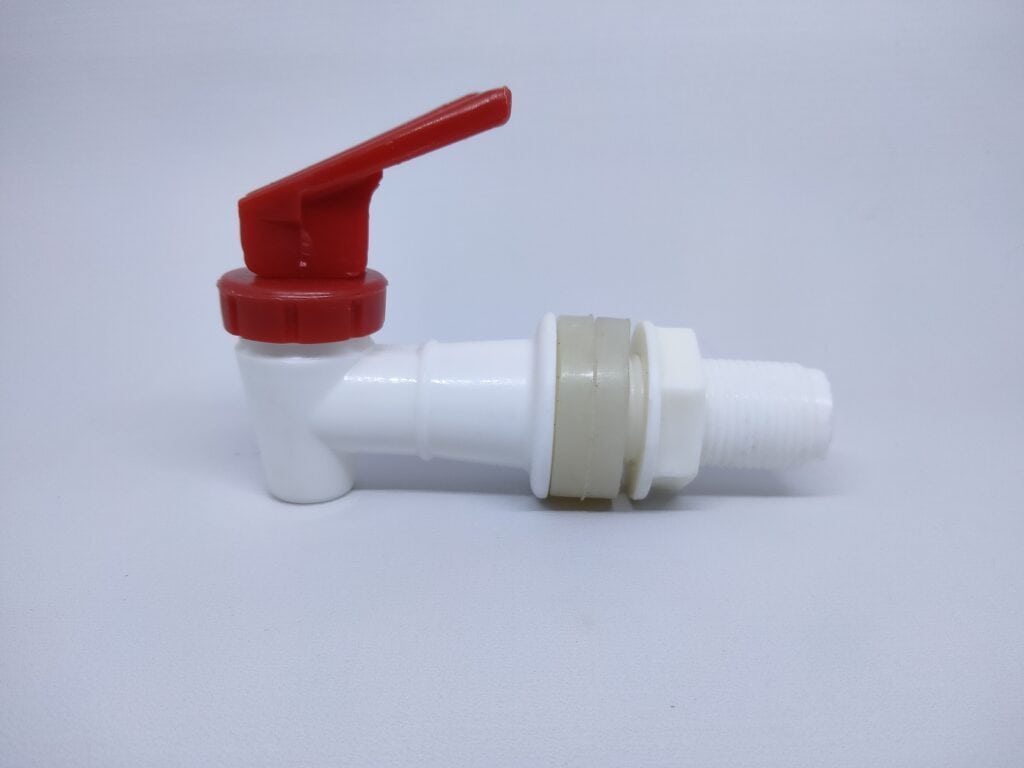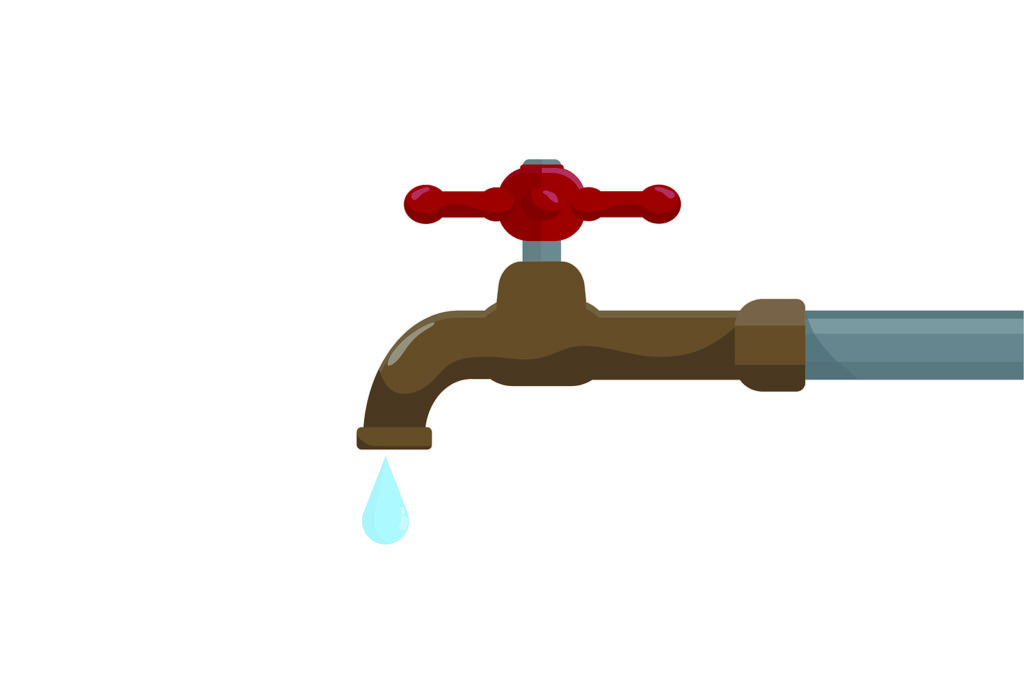Water Saving Devices For Taps
As a homeowner, I've made it a top priority to conserve water not only to save on utility bills but also to contribute to a more sustainable future. One of the most effective steps I've taken is incorporating water-saving devices for taps throughout my home.
These ingenious devices not only minimize water wastage but also maintain the functionality I need. In this comprehensive guide, I'll share my journey into discovering various water-saving devices for taps, how they work, and the incredible benefits they bring.
Whether you're a fellow homeowner or a business owner, my aim is to provide you with all the information you need to make informed choices and join me in the effort to conserve this precious resource.
Understanding the Importance of Save Water Conservation
Water, a finite and indispensable resource, lies at the heart of our planet's sustainability. In today's world, where concerns about water scarcity and environmental preservation loom large, the imperative to conserve this precious liquid is paramount.
Across many regions, the specter of water scarcity casts a long shadow, necessitating urgent action from both individuals and businesses to curtail water consumption.
In the global effort to safeguard our water resources, water-saving devices for faucets emerge as indispensable tools. These innovative devices are meticulously crafted to enhance water conservation by reducing flow rates and curtailing unwarranted wastage.
When we collectively embrace and employ these water-saving mechanisms, we wield the power to effect meaningful change in our journey toward sustainable water use. By doing so, we contribute to the preservation of our most vital natural resource, ensuring a healthier and more sustainable future for generations to come.
Types of Water-Saving Devices for Taps
In the quest for sustainable water usage, an array of innovative water-saving devices for taps has emerged. These devices not only contribute to water conservation but also offer practical solutions for individuals and businesses seeking to reduce their water consumption. Here are some key types of water-saving devices for taps:
Faucet Aerators
These unassuming yet highly effective devices can be effortlessly attached to most taps. Faucet aerators work by infusing air into the water flow, resulting in a consistent stream that mirrors the performance of a standard faucet. However, the secret lies in the reduced flow rate, which significantly diminishes water consumption while maintaining usability.
Low-Flow Showerheads
Designed to optimize your shower experience while minimizing water usage, low-flow showerheads are engineered to restrict the volume of water flowing through your shower. This reduction in flow rate is often imperceptible to the user but can result in substantial water savings. These showerheads come in various designs, ensuring compatibility with any bathroom décor.
Sensor-Activated Taps
Embracing modern technology, sensor-activated taps offer a hands-free approach to water conservation. These taps incorporate motion sensors that detect the presence of hands underneath and automatically control the water flow. By eliminating the possibility of leaving the tap running unintentionally, these devices are particularly valuable in high-traffic areas such as public restrooms and commercial kitchens.
Flow Restrictors
Versatile and adaptable, flow restrictors can be retrofitted onto existing taps to regulate water flow. These devices are adjustable, allowing users to fine-tune the flow rate according to their specific preferences and requirements. Flow restrictors find applications in both residential and commercial settings, making them a versatile choice for water conservation efforts.

How Water-Saving Devices Work
The world of water-saving devices is replete with innovative mechanisms designed to limit water flow from taps and showers while maintaining functionality and user satisfaction.
Here are additional methods employed by these devices:
- Water-saving devices work by limiting the flow rate of water from taps or showers. They achieve this through various mechanisms, such as: Aeration: Devices like faucet aerators mix air with water, reducing the amount of water used without sacrificing water pressure. Flow Restriction: Flow restrictors physically limit the amount of water that can pass through the tap, ensuring a lower flow rate.
- Pressure Regulation: Some water-saving devices regulate water pressure to achieve a lower flow rate. By reducing the force with which water is delivered, they ensure that less water is consumed without compromising the performance of the tap or shower. This method is effective in maintaining a comfortable and efficient water flow.
- Timing Mechanisms: Timer-equipped devices, often used in commercial settings like public restrooms, allow users to access water for a predetermined duration. After the set time elapses, the device automatically shuts off the water flow. This prevents water from being left running unintentionally and encourages responsible water use.
- Volume Limitation: Water-saving devices can also restrict the total volume of water dispensed. These devices are particularly useful in applications like laundry machines, where they limit the amount of water used for each cycle, ensuring efficient cleaning while conserving water resources.
- Smart Technology: With the advent of smart technology, water-saving devices can now be integrated into smart home systems. Users can monitor and control water usage through smartphone apps, receiving real-time data and making adjustments as needed. This level of control allows for precise water conservation efforts.
- Rainwater Harvesting Systems: While not directly a tap or shower device, rainwater harvesting systems are essential tools for conserving water. They collect and store rainwater for various non-potable uses like landscape irrigation, reducing the demand on treated municipal water supplies
Benefits of Installing Water-Saving Devices
The installation of water-saving devices brings about a multitude of advantages that extend beyond the immediate reduction in water consumption. Let's delve into the various benefits of incorporating these devices into your water management strategy:
Environmental Benefits
Water conservation is an elemental component of responsible environmental stewardship. By decreasing water usage through the implementation of water-saving devices, we alleviate the strain on local water sources and delicate ecosystems. Moreover, the ripple effect of reduced water demand extends to energy conservation. Lower water consumption translates into diminished energy requirements for water treatment and distribution, resulting in a reduction in carbon emissions. This dual impact underscores the pivotal role water-saving devices play in promoting ecological sustainability.
Financial Savings
The economic implications of water-saving devices cannot be overstated, particularly in settings where water consumption is substantial, such as commercial establishments. Although the initial investment in these devices may seem modest, the long-term savings they generate are substantial. Reduced water bills provide an ongoing economic benefit that can significantly offset the initial cost of installation, making it a wise financial decision for individuals and businesses alike.
Compliance with Regulations
Many regions and municipalities have introduced stringent water conservation regulations, mandating the incorporation of water-saving devices in new construction or renovation projects. Compliance with these regulations is not merely a legal obligation but also a vital step in promoting sustainable water usage. Failure to adhere to these standards can result in penalties and hinder efforts to mitigate water scarcity issues, making it imperative for stakeholders to embrace these technologies.
Improved Water Pressure
One common misconception about water-saving devices is that they compromise water pressure. However, these devices are engineered to optimize water flow, reducing wastage without sacrificing performance. By efficiently regulating water distribution, they ensure a consistent and adequate supply of water without the need for high flow rates. This not only improves water pressure but also enhances the overall user experience, dispelling any concerns about diminished functionality.
Choosing the Right Water-Saving Device
When embarking on the journey to enhance your water conservation efforts through the installation of water-saving devices, a thoughtful selection process is essential. Here are crucial factors to weigh as you make your choice:
Flow Rate Variety
Water-saving devices come in a range of flow rates, and selecting the right one is pivotal to striking a balance between water conservation and practicality. Contemplate the intended use of the tap or shower when determining the ideal flow rate. For instance, a kitchen faucet may require a different flow rate compared to a bathroom sink or a showerhead. Understanding the specific needs of each fixture ensures that you optimize water usage without compromising functionality.
Installation Compatibility
Compatibility with your existing taps or shower fixtures is a paramount consideration. While some water-saving devices can be easily retrofitted onto existing fixtures, others may necessitate replacing the entire fixture. Therefore, assess the compatibility of your chosen device with your current setup to avoid unexpected complications during installation.
Durability and Quality
Investing in high-quality water-saving devices is a prudent decision in the long run. While premium devices may carry a higher upfront cost, their durability often proves cost-effective over time. Opting for well-crafted, durable devices ensures that your water-saving efforts are sustainable, and you won't need to replace them frequently. Quality devices are also more likely to deliver consistent performance, maintaining their water-saving benefits throughout their lifespan.
Water Efficiency Certifications
Look for water-saving devices that bear recognized water efficiency certifications. These certifications, such as the WaterSense label in the United States, indicate that the device has met stringent efficiency standards. Choosing certified devices provides assurance that your selected water saving products to have been rigorously tested and adhere to industry benchmarks for water conservation.
Cost-Benefit Analysis
Lastly, perform a comprehensive cost-benefit analysis. While it's important to consider the initial purchase price of water-saving devices, also factor in the long-term savings on water bills and potential incentives or rebates offered by local authorities for using efficient devices. This holistic assessment will help you make an informed decision that aligns with your budget and sustainability goals.

Installation and Maintenance
Installing and maintaining water-saving devices is a pivotal aspect of water conservation. Whether you're a homeowner looking to embark on a DIY project or managing complex installations in commercial settings, understanding the nuances of installation and diligent maintenance is crucial. Here's a comprehensive guide:
DIY Installation
For homeowners seeking to implement water-saving devices, many options are user-friendly and conducive to DIY installation. Manufacturers often furnish detailed installation instructions, and basic tools are generally sufficient. However, your confidence in your DIY skills is a decisive factor. If you have any reservations or uncertainties, it's advisable to engage the services of a professional to ensure the correct installation and minimize the risk of potential issues.
Professional Installation
In commercial settings or scenarios involving intricate installations, it's prudent to enlist the expertise of a professional plumber. Professional installers possess the skill set and experience needed to guarantee precise and leak-free installations. Their insights into the specific requirements of complex systems can be invaluable in optimizing the performance of water-saving devices.
Maintenance Tips
Sustaining the efficiency of water-saving devices hinges on regular maintenance. Follow these maintenance guidelines to ensure their continued effectiveness:
- Leak Checks: Routinely inspect your water-saving devices for leaks. Even minor leaks can undermine your conservation efforts and lead to water wastage.
- Aerator Care: Clean aerators periodically to prevent sediment buildup, which can impede water flow. A clogged aerator reduces the device's effectiveness.
- Part Replacement: Over time, certain components of water-saving devices may wear out. Replace worn-out parts promptly to maintain peak performance.
- Manufacturer Recommendations: Adhere to manufacturer-provided maintenance guidelines, which often include recommended intervals for inspection, cleaning, and replacement.
- Consistent Vigilance: Develop a habit of regularly checking water-saving devices, especially in high-traffic areas. This proactive approach ensures that any issues are promptly identified and addressed.
Top Water-Saving Devices for Taps
- Faucet Aerators: Faucet aerators are simple yet effective attachments that mix air with the water flow, reducing water consumption without compromising water pressure or functionality. They are easy to install and come in various flow rate options to suit different needs.
- Low-Flow Showerheads: Low-flow showerheads limit the amount of water released during showers while maintaining a satisfying water pressure. They are available in various styles and can significantly reduce water usage in the bathroom.
- Sensor-Activated Taps: Sensor-activated taps use motion sensors to automatically control water flow. They are commonly found in public restrooms and commercial kitchens, preventing unnecessary water wastage by shutting off when not in use.
- Flow Restrictors: Flow restrictors can be added to existing taps to reduce water flow. They are adjustable, allowing users to customize the flow rate according to their preferences. Flow restrictors are versatile and can be used in both residential and commercial settings.
- Pressure-Compensating Valves: These valves maintain a consistent water pressure regardless of fluctuations in supply, ensuring that water-saving devices perform optimally without compromising user experience.
- Smart Faucets: Smart faucets feature sensors and programmable settings, allowing users to customize water temperature and flow, helping to minimize waste. Some even offer features like automatic shut-off after a certain time.
- Digital Water Flow Monitors: These devices provide real-time data on water usage, helping users monitor and reduce their water consumption by raising awareness of how much water is being used.
FAQs About Water-Saving Devices for Taps
What are water-saving devices for taps, and why are they important?
Water-saving devices for taps are innovative tools designed to reduce water consumption while maintaining the functionality of taps and faucets. They are crucial in addressing water scarcity and environmental preservation by curbing unnecessary water wastage in both residential and commercial settings.
How do water-saving devices like faucet aerators work?
Faucet aerators work by infusing air into the water flow, resulting in a consistent stream that mirrors the performance of a standard faucet. This process reduces the flow rate, significantly diminishing water consumption while maintaining usability and water pressure.
Are low-flow showerheads effective at conserving water, and do they compromise the shower experience?
Low-flow showerheads are designed to optimize the shower experience while minimizing water usage. They restrict the volume of water flowing through the shower, which is often imperceptible to the user. This reduction in flow rate results in substantial water savings without compromising the quality of the shower.
What are sensor-activated taps, and where are they commonly used?
Sensor-activated taps incorporate motion sensors that detect the presence of hands underneath and automatically control the water flow. These taps are commonly found in high-traffic areas such as public restrooms and commercial kitchens, preventing unintentional water wastage by shutting off when not in use.
Can flow restrictors be added to existing taps, and how do they work?
Yes, flow restrictors can be retrofitted onto existing taps to regulate water flow. These devices are adjustable, allowing users to customize the flow rate according to their preferences. Flow restrictors work by physically limiting the amount of water that can pass through the tap, ensuring a lower flow rate.
Do water-saving devices compromise water pressure and functionality?
Water-saving devices are designed to optimize water flow while reducing wastage. They do not compromise water pressure or functionality when used correctly. In fact, they often improve water pressure by ensuring a consistent and adequate supply of water without the need for high flow rates.
Are there certifications for water-saving devices to ensure their efficiency?
Yes, there are water efficiency certifications such as the WaterSense label in the United States. These certifications indicate that a device has met stringent efficiency standards and adheres to industry benchmarks for water conservation. Choosing certified devices provides assurance of their effectiveness.
How can I choose the right water-saving device for my needs?
To choose the right water-saving device, consider factors like flow rate variety, installation compatibility, durability, water efficiency certifications, and perform a cost-benefit analysis. Understand the specific needs of each fixture to optimize water usage without compromising functionality.
Can I install water-saving devices myself, or do I need professional installation?
Many water-saving devices are user-friendly and conducive to DIY installation. However, in commercial or complex settings, it's advisable to engage a professional plumber for precise and leak-free installations. The choice depends on the complexity of the installation and your confidence in DIY skills.
How can I maintain water-saving devices to ensure their efficiency?
To maintain water-saving devices, regularly check for leaks, clean aerators to prevent sediment buildup, replace worn-out parts promptly, follow manufacturer-provided maintenance guidelines, and develop a habit of inspecting devices in high-traffic areas. Consistent vigilance ensures their continued effectiveness.
Conclusion
In conclusion, my journey into incorporating water-saving devices for taps in my home has been a rewarding one, driven by a deep commitment to conserving our planet's most precious resource. Understanding the importance of water conservation has fueled my passion for adopting these ingenious devices, not only to save on utility bills but also to play my part in building a more sustainable future.
Water-saving devices are not just about reducing wastage; they're about making conscious choices that benefit both the environment and our wallets. From faucet aerators to low-flow showerheads and sensor-activated taps, these devices have transformed the way I use water, allowing me to enjoy the same functionality while significantly reducing my consumption.
I believe that, whether you're a homeowner or a business owner, embracing water-saving devices is a small yet impactful step towards a more sustainable future. It's about understanding the intricate mechanisms behind these devices, their benefits, and their role in mitigating water scarcity and environmental challenges. It's about making informed choices that contribute to a healthier planet for generations to come.

